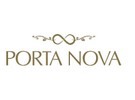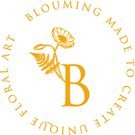Malou van der Burg of Blouming Floral Art explains Aad van Luijk how to flex a rose. Aad has been in the rose business for 40 years. He is one of the owners of Porta Nova, and despite being retired, he is at Porta Nova almost every day.
Aad van Luijk
Malou is visiting Porta Nova with Mike Duivenvoorden of Duif Flowers. She orders her flowers from Duif Flowers and finds working sustainably very important. To learn more about the story behind the roses she uses, she pays a visit to the rose nursery. "When I receive a rose, I take off all the thorns and leaves. That doesn't happen at a nursery, of course." Aad explains that a grower does not want to damage the rose because of hygiene: the more damage, the greater the chance of bacteria. As a florist or consumer, however, it is better to remove them. That way all the energy can go to the rose and not the leaves.
Aad van Luijk, Mike Duivenvoorden, Malou van der Burg, and Marc Eijsackers
To discover the ins and outs of growing roses, Malou and Mike are attending a guided tour by Aad and Marc Eijsackers, who also works at Porta Nova. During the tour, Aad and Marc explained more about the nursery where Red Naomi roses are grown on an area of 19.3 hectares. Every day between 175,000 and 200,000 roses are processed, seven days a week. "Our goal is to grow red roses of high quality and in large numbers, in the most sustainable way possible," Marc says.
The 'star awarded restaurant'
Daily menu
The roses are given a special nutritional recipe that is adjusted daily according to the plants' needs. The ingredients and quantities are put together with precision. The water used for this process is collected rainwater. Porta Nova collaborates with a nearby business park to collect rainwater, which is then stored in an underground water storage. Before use, the water is filtered in the 'inner dune' of the so-called 'star awarded restaurant', as the growers call their food center.
The recipe of the week is in this bottle
Aad explains the Green room
Green room
In the 'Green Room', Aad explains how cold and hot water is stored 100 meters underground. In winter, the hot water is used to heat the greenhouses, while in summer the cold water cools the greenhouse. In addition, the required CO₂ comes from residual waste from refineries in Pernis. "Everything in the nursery is geared towards not using natural gas," says Aad. Even Porta Nova's residual heat can be enough to heat a large part of a residential area.
Grown locally
In the 'nursery', the roses are cared for as they grow. It takes 6,5 to 7 from weeks to complete a cycle. Three varieties of Red Naomi are grown at Porta Nova: Supra, Unica, and Magna, with length, maturity, and bud size being the main differences. This year, a new crop has been planted in a part of the greenhouse.
During the tour, Mike says he prefers locally grown flowers. This is also one of the reasons why Malou orders her flowers from him. "In Scandinavian supermarkets, for example, there is also much more awareness of Dutch roses," says Aad, Malou nods in agreement.
After cutting the roses, they can recover in the 'recovery room', which also looks a bit like a sterile hospital room. This is where the roses get the first water after cutting, which is supposed to be hygienic and cold. "With a very small amount of chlorine," says Aad. All this is meant to prolong the vase life of the roses. Incidentally, the water with chlorine is re-used for the next batch in the recovery room.
The recovery room
Audition time
Time to shine
Then it is time for the roses to audition and see which label the roses will get. Will it be Supra, or will it be Unica or Magna? The roses are checked, sorted by category, and then packed. During the tour, Malou takes lots of photos and videos to share with her followers on social media , and to create more awareness of Dutch floriculture.
Could this be a bunch of Supra?
The Red Naomis are sorted
Until their departure, the Red Naomis are sorted and chilled in the 'wellness center'. It is cold in this room as it is only a degree above zero. After the roses have been pampered, it is time for departure. The tour also comes to an end.
Ready for departure
The last room to be visited is the 'reality room'. Here, roses are tested in practice and improvements to the Red Naomi are worked on.
With Malou and Mike's visit, another step has been taken in raising awareness about floriculture. Through florists like Malou, this knowledge is further shared with consumers. And Aad? Now, he knows how to flex a rose.
For more information:
Marc Eijsackers
Porta Nova
Tel: +31 (0)6 51 61 02 36
[email protected]
www.portanova.nl
Mike Duivenvoorden
Duif Flowers
Tel: +31 (0)6 19 37 88 69
[email protected]
www.duifflowers.com
Malou van der Burg
Blouming Floral Art
Tel: +31 (0)6 10 00 97 10
[email protected]
www.bloumingfloralart.nl










